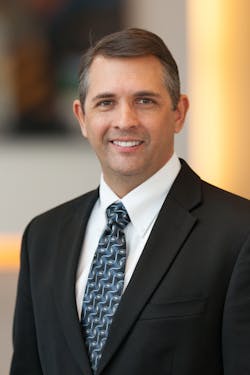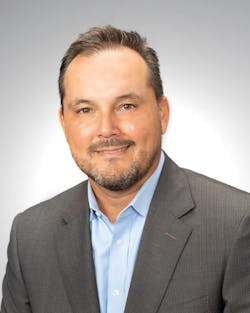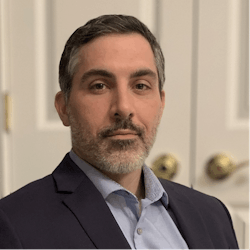Analytics for Population Health and Clinical Transformation: Moving Forward on the Journey of 1,000 Miles
What seemed incredibly messy and poorly defined even five years ago, is gradually now coming into focus, and that is the question of where the entire “journey of 1,000 miles” around leveraging data and analytics for population health management and clinical transformation, is headed. What’s clear now, as the leaders of pioneering patient care organizations plow ahead on that road, is that things are moving towards both big-picture coordination of masses of data to improve the health status of entire communities, and at the same time, towards smaller-picture pinpointing of gaps in care delivery and effectiveness, across entire integrated health systems.
Among the larger integrated health systems, certainly, the senior leaders at UC San Diego Health in San Diego are steaming full-speed ahead. And helping to lead the charge there is Amy Sitapati, M.D., a practicing internal medicine physician and the chief medical information officer for population health for the organization (in fact, UCSD Health has three CMIOs—one for population health, one for inpatient care, and one for outpatient care). Dr. Sitipati, who looks at the overall U.S. healthcare system and says, “We’re still in kindergarten in terms of U.S. healthcare system-wide efforts,” also says that “We’re mid-field now in terms of the way an individual health system thinks about this.”
In fact, she reports that, at UCSD Health, “We’re using complex risk stratification to match each patient to our Healthy Places Index, based on zip code, to better understand the community base a patient might come from, and how that might inform our work. We’re focused on equity, so when we run a report on hypertension for hypertension control, since 97 percent of our patients have completed racial information, we can identify Black patients, for example, and can identify who the patients are, in terms of the Healthy Patients Index. And if patients are interested and it’s applicable, we can reach out to individuals who are facing structural barriers. So now we can say to them, we have this program to offer healthy food that’s low-salt and low-cholesterol and help you access healthy food.”
Indeed, that means that Sitipati and her colleagues are not only identifying individuals with chronic illness, such as hypertension, diabetes, or congestive heart failure; they are also connecting those individuals to micro-level community disease prevalence, and are working to help those individuals overcome structural barriers that can be uncovered through population-level and micro-community-level data analysis.
Overall, Sitipati says, the technology is available now to do everything that needs to be done in terms of population health-level data analytics (though she adds that there remains a “hassle factor” with some applications); the key challenges, once an organization reaches her organization’s level, become process-related. “Tech-quity is a hard one; how do you achieve technology access and literacy for all? And linguistic access—are we actually there? There are things we need to do on a health system side to make it work, and at the patient level. I think of my own mom who’s in her late 70s but has poor vision and mobility and has difficulty simply connecting her iPad to her TV—or my Spanish-speaking patient who has diabetes and may not have Wi-Fi at home, what does that mean to offer digital health? These are the things we need to talk about.”
Still, it’s clear that nothing is stopping the leaders of pioneering patient care organizations around the country from moving ahead on countless fronts now. What’s clear is that the technology is adequate to do advanced data analytics for population health management, care management, clinical transformation, and operational optimization. Now, industry leaders agree, the challenges are strategic and operational.
As Carl Dolezal, a principal at The Chartis Group, the Chicago-based consulting firm, puts it, “I think different organizations are pursuing different journeys depending on their priority initiatives and need for analytics. We work with many organizations on analytics strategy. Those organizations that are truly data-driven and really get value out of their analytics investment have formed a partnership around analytics. For example, using analytics for things like driving and inform their strategic plan, clinical improvement, rapid response to COVID. Those organizations have analytics sitting with them at the table, and are engaging early in the process. Some organizations are still in a more transactional mode. Meaning, they are still operating in more of a submit a request/fulfillment mode and not truly engaging with the analytics team as a partner.”
That said, Dolezal adds that “We’re in a transition period, where organizations are moving from a transactional model to a more consultative model, where analytics is at the table working to help solve the problems. They’re an active part of the solution.”
Let a thousand flowers bloom
The very heterogeneity of the analytics initiatives taking place in patient care organizations across the country speaks to the energy and commitment being demonstrated by leaders in the field right now. Among the countless efforts evolving forward:
At the 40-hospital, $23 billion UPMC health system in Pittsburgh, chief healthcare data and analytics officer Oscar Marroquin, M.D. reports that he and his colleagues are involved in a comprehensive effort to analyze the populations of patients the system is caring for, who have either diabetes or chronic kidney disease. Dr.Leveraging analytics to support physicians at the point of clinical decision-making
In addition to leveraging analytics to support community-wide population health efforts; to identify gaps in care for patients with chronic disease; to improve clinical operations in medical group practices; and to strongly improve the ability to optimize reimbursement in federal and private payer value-based programs, what are some other directions in which analytics work will evolve forward in the near future?
One has got to be in the leveraging of analytics to support physicians at the point of clinical decision-making, as doctors are actually on the verge of creating orders for care and tests, says Ryan Nellis of the Charlotte-based Premier Inc. Nellis, who is vice president and general manager for Premier Clinical Decision Support, which still operates under the publicly facing name of Stanson Health, says that “Physicians and other clinicians are struggling with an ongoing signal-to-noise ratio, an alert-fatigue epidemic.” What’s becoming more and more obvious, he says, is that all the alerts need to be powered by analytics, “at the moment when we can influence a patient’s health trajectory. What should a doctor do at the point of the care? Tell them to switch a med, cancel a wasteful treatment,” and so on. “And so as a market right now, we’ve got a lot of data; we’ve got it flying out of our eyeballs; we need to do a better job of distilling the data at the right time in the right place. A lot of us at Stanson were from Cedars-Sinai, based in LA, and we’ve got a team of doctors, nurses, and pharmacists, who are spending their days thinking about how to get the right information to the doctor at the right moment. So you don’t pop up alerts at the beginning when the doctor opens up the EHR, but at the point of clinical decision-making.”
There remain several challenges to moving forward effectively in this area, Nellis says. One is simply the exhaustion that clinicians are experiencing during the ongoing COVID-19 pandemic. But the other? “The fact is that 60 percent of the patient chart is still in the form of blurbs and blobs of text. In other words, it’s a freetext problem.” Indeed, he adds, “This isa bout the broader environment around EHR use.
As one CMIO with whom we work told me recently, ‘My EHR is like the lights of Las Vegas’: in other words, blinding” in terms of the amount of data and information being thrown at practicing physicians. What’s more, he says, “One common narrative is that everyone believes that EHR vendors are another barrier. In my opinion, they’re not a barrier; they’re making their systems better, and are open to third-party vendors. We have a really great relationship with the EHR vendors. You might be surprised to hear that. People think in their heads that EHRs are a big challenge; I think they’ve really changed, and the EHR vendors are really trying to move forward to help us distill information to support patient care.”
Where we go from here
So, where does this leave leaders of patient care organizations as they move forward on all these journeys-within-the-broader-journey?
Well, for one thing, say those involved, provider leaders have been learning about agility via their experiences during the COVID-19 pandemic. As UPMC’s Marroquin reports, “COVID accelerated the need for data to drive how we do things. Because when you don’t have prior experience to rely on (‘priors’ in epidemiological lingo), one has to rely on the immediate learnings from near-real time data to drive how we go about delivering care. For example, when monoclonal antibodies came out, we had to rapidly identify who would be eligible for treatment with the antibodies so that we could provide this life-saving therapy to the largest number of eligible people; so, in a matter of days, we developed an algorithm that would help us alert clinicians and patients that they were eligible for the antibodies within one day of a positive test. That was in contrast to what I mentioned above, that earlier on our analytics journey, that it would take us months-to-years to go from an idea to a deliverable, while with COVID this would happen in days. That is what I mean that COVID has proven to be an accelerator in how we use data. And we could only do that work because we actually had a lot of the pieces already in place here at UPMC.”
More broadly, Marroquin testifies that “All the pieces that I’ve mentioned need to be put in place in order to meaningfully use data and analytics; because without them, one cannot do this at scale. And that requires institutional commitment that data/analytics are a priority, which then is manifested by having a dedicated team that is singularly focused on the task, with a lot of attention to detail, and the determination to keep pushing the ball forward on the goal of deriving meaningful insights from the data we have available that can be used to better deliver care for our patients.”
The Chartis Group's Dolezal emphasizes the vastness of the data landscape itself. “There is a massive, massive amount of information” involved now. “We used to focus on analytics coming from EHRs, transactional systems, ERPs, etc. Now, wearables, patient-provided information, social determinants of health” are also potential sources for analytics work. “We’re now dealing with much more information, and it has to be defined and formatted, to create that insight. I think that interoperability, right out, is still a challenge. We haven’t solved that yet. Our ability to exchange data and information remains a challenge. And I still see some blocker mentality in some organizations, where freeing up the data remains a challenge. But one of the most vexing problems remains talent: it is harder and more challenging than ever to recruit good analytics talent into healthcare. Getting data scientists into healthcare, into a complex environment where data has to be curated and cleansed, it’s just a challenge, and we’re being forced to be really discerning because of that.”
UCSD Health’s Sitipati says she and her colleagues are absolutely focused on reaching out to partner in all this work with public health entities and payers. She says she’s very excited that the managed Medicaid payers in her region are extremely interested in partnering in very concrete ways with providers to improve the health of the populations that they all serve. And, she concludes, “In terms of advice, I’d say that if you don’t have a plan for where you’re going, you have no idea where you’re going.”






